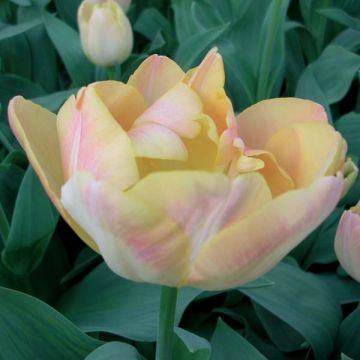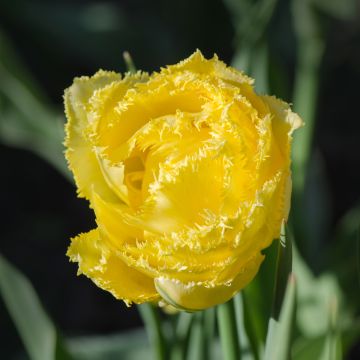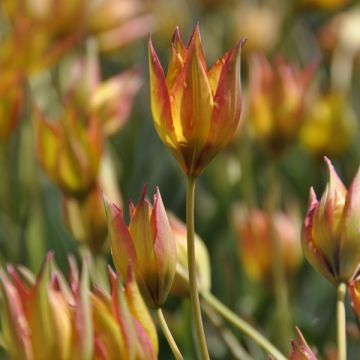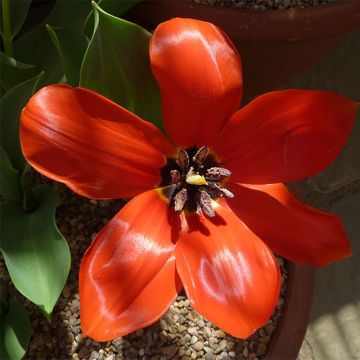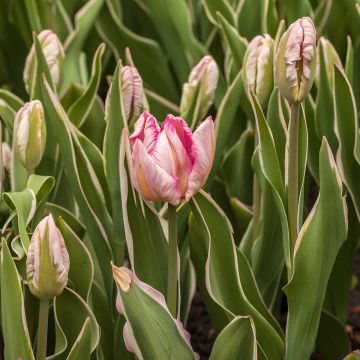

Tulipes doubles hâtives Murillo en mélange
Tulipa Murillo Mix- Double Early Tulip
Tulipa Murillo Mix
Tulip
I usually order tulips from you. They are always beautiful, but this time, it's a miss! Only two out of five came out, and they were degenerated! Is the genetics of these flowers fragile or unstable?
Mely, 18/05/2024
Special offer!
Receive a €20 voucher for any order over €90 (excluding delivery costs, credit notes, and plastic-free options)!
1- Add your favorite plants to your cart.
2- Once you have reached €90, confirm your order (you can even choose the delivery date!).
3- As soon as your order is shipped, you will receive an email containing your voucher code, valid for 3 months (90 days).
Your voucher is unique and can only be used once, for any order with a minimum value of €20, excluding delivery costs.
Can be combined with other current offers, non-divisible and non-refundable.
Why not try an alternative variety in stock?
View all →This plant carries a 6 months recovery warranty
More information
We guarantee the quality of our plants for a full growing cycle, and will replace at our expense any plant that fails to recover under normal climatic and planting conditions.
Would this plant suit my garden?
Set up your Plantfit profile →
Description
These Murillo Early Double Tulips in a mixture will charm with their double and spectacular flowers in various colours and their early flowering. Planted en masse, the different varieties that make up this mixture create a lush and variegated effect that is hard to ignore. Low and stocky, they are generally used at the forefront of a bed, along a path, or even in a balcony planter. They bloom in March-April, at the beginning of the tulip season.
The Murillo Early Double Tulip belongs to the Liliaceae family. It is officially classified in Division 2, whose main characteristic is to have large double flowers, resembling those of peonies, carried by rather short stems. The Murillo tulips come in a range of colours resulting from simple mutations. Depending on the variety, the plant will reach between 20 and 25 cm (8 and 10in) in height when flowering. Perched on stocky stems, just above the broadly lanceolate leaves, the flowers have a diameter of up to 11 cm (4in) and stand out in the garden with their shape and colour. Each variety has its own personality. The glaucous green foliage turns yellow and then dries out a few weeks after flowering, as the bulb enters a resting phase.
These tulips are worthy of being featured in the most beautiful canvases of Flemish masters. Romantic to the core, Murillo tulips particularly complement small white spring-flowering bulbs such as certain botanical narcissi or blue muscari, Siberian squills, and chionodoxa, as well as ipheions. With their rich colours, sturdy and often fragrant flowers, they can be used in beds, rockeries, and to enhance your bouquets. The reputation of early double tulips speaks for itself.
Unmatched for bringing early season fancy to pots or sunny gardens, don't forget to consider the height and flowering period of your tulips when designing your beds, as these parameters can vary significantly from one cultivar to another. It is wise to plant a few more bulbs for cutting, as they make stunning cut flowers that last a long time in a vase.
Note: each batch is unique and the proportion of colours may vary significantly from one batch to another.
Plant habit
Flowering
Foliage
Botanical data
Tulipa
Murillo Mix
Liliaceae
Tulip
Cultivar or hybrid
Planting and care
Place the Murillo tulips in a sunny or partially shaded location, sheltered from strong winds, from October to December for spring flowering. Plant the bulbs at a depth of 15 cm (6in), in a light and well-drained soil that has been deeply loosened. Space the bulbs 10 cm (4in) apart without letting them touch to create a mass effect; cut the flower stalks after flowering. Allow the leaves to completely dry before cutting them. Tulips do not like stagnant humidity, especially during their summer dormant period.
Planting period
Intended location
Care
Planting & care advice
-
, onOrder confirmed
Reply from on Promesse de fleurs
Similar products
Haven't found what you were looking for?
Hardiness is the lowest winter temperature a plant can endure without suffering serious damage or even dying. However, hardiness is affected by location (a sheltered area, such as a patio), protection (winter cover) and soil type (hardiness is improved by well-drained soil).

Photo Sharing Terms & Conditions
In order to encourage gardeners to interact and share their experiences, Promesse de fleurs offers various media enabling content to be uploaded onto its Site - in particular via the ‘Photo sharing’ module.
The User agrees to refrain from:
- Posting any content that is illegal, prejudicial, insulting, racist, inciteful to hatred, revisionist, contrary to public decency, that infringes on privacy or on the privacy rights of third parties, in particular the publicity rights of persons and goods, intellectual property rights, or the right to privacy.
- Submitting content on behalf of a third party;
- Impersonate the identity of a third party and/or publish any personal information about a third party;
In general, the User undertakes to refrain from any unethical behaviour.
All Content (in particular text, comments, files, images, photos, videos, creative works, etc.), which may be subject to property or intellectual property rights, image or other private rights, shall remain the property of the User, subject to the limited rights granted by the terms of the licence granted by Promesse de fleurs as stated below. Users are at liberty to publish or not to publish such Content on the Site, notably via the ‘Photo Sharing’ facility, and accept that this Content shall be made public and freely accessible, notably on the Internet.
Users further acknowledge, undertake to have ,and guarantee that they hold all necessary rights and permissions to publish such material on the Site, in particular with regard to the legislation in force pertaining to any privacy, property, intellectual property, image, or contractual rights, or rights of any other nature. By publishing such Content on the Site, Users acknowledge accepting full liability as publishers of the Content within the meaning of the law, and grant Promesse de fleurs, free of charge, an inclusive, worldwide licence for the said Content for the entire duration of its publication, including all reproduction, representation, up/downloading, displaying, performing, transmission, and storage rights.
Users also grant permission for their name to be linked to the Content and accept that this link may not always be made available.
By engaging in posting material, Users consent to their Content becoming automatically accessible on the Internet, in particular on other sites and/or blogs and/or web pages of the Promesse de fleurs site, including in particular social pages and the Promesse de fleurs catalogue.
Users may secure the removal of entrusted content free of charge by issuing a simple request via our contact form.
The flowering period indicated on our website applies to countries and regions located in USDA zone 8 (France, the United Kingdom, Ireland, the Netherlands, etc.)
It will vary according to where you live:
- In zones 9 to 10 (Italy, Spain, Greece, etc.), flowering will occur about 2 to 4 weeks earlier.
- In zones 6 to 7 (Germany, Poland, Slovenia, and lower mountainous regions), flowering will be delayed by 2 to 3 weeks.
- In zone 5 (Central Europe, Scandinavia), blooming will be delayed by 3 to 5 weeks.
In temperate climates, pruning of spring-flowering shrubs (forsythia, spireas, etc.) should be done just after flowering.
Pruning of summer-flowering shrubs (Indian Lilac, Perovskia, etc.) can be done in winter or spring.
In cold regions as well as with frost-sensitive plants, avoid pruning too early when severe frosts may still occur.
The planting period indicated on our website applies to countries and regions located in USDA zone 8 (France, United Kingdom, Ireland, Netherlands).
It will vary according to where you live:
- In Mediterranean zones (Marseille, Madrid, Milan, etc.), autumn and winter are the best planting periods.
- In continental zones (Strasbourg, Munich, Vienna, etc.), delay planting by 2 to 3 weeks in spring and bring it forward by 2 to 4 weeks in autumn.
- In mountainous regions (the Alps, Pyrenees, Carpathians, etc.), it is best to plant in late spring (May-June) or late summer (August-September).
The harvesting period indicated on our website applies to countries and regions in USDA zone 8 (France, England, Ireland, the Netherlands).
In colder areas (Scandinavia, Poland, Austria...) fruit and vegetable harvests are likely to be delayed by 3-4 weeks.
In warmer areas (Italy, Spain, Greece, etc.), harvesting will probably take place earlier, depending on weather conditions.
The sowing periods indicated on our website apply to countries and regions within USDA Zone 8 (France, UK, Ireland, Netherlands).
In colder areas (Scandinavia, Poland, Austria...), delay any outdoor sowing by 3-4 weeks, or sow under glass.
In warmer climes (Italy, Spain, Greece, etc.), bring outdoor sowing forward by a few weeks.






























